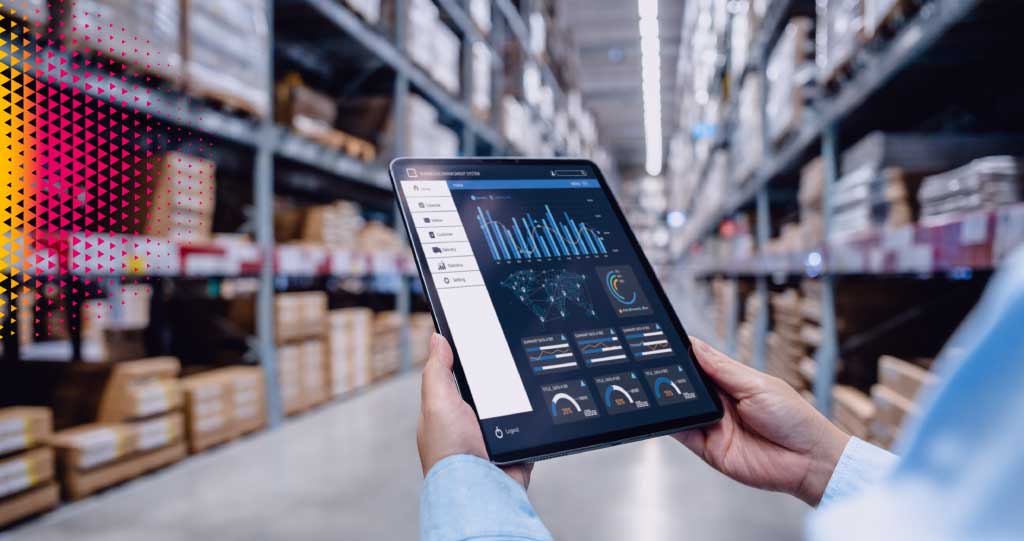E-commerce logistics: optimizing order management solutions

More than 66% of customers abandon their purchases due to high delivery fees, according to a Sendcloud survey. With heightened competition and discerning consumers, retail brands must innovate their e-commerce logistics to improve delivery efficiency, reduce costs, manage frictionless returns, and meet personalization demands. This article investigates strategies to enhance unified e-commerce logistics, including shared inventory, utilizing tools that bolster customer experience while maintaining profitability.
Optimized e-commerce logistics for faster deliveries
Criteria for e-commerce logistics performance
In e-commerce, logistics efficiency hinges on the ability to guarantee prompt shipment of products. The interval between online ordering and receiving goods is vital for a brand’s competitiveness. Customer satisfaction is a testament to the overall effectiveness of the logistics process. A seamless and transparent delivery experience significantly influences customer loyalty.
Controlling logistics costs is essential, and identifying optimization opportunities, like choosing the right preparation site (warehouse or store), is key to balancing performance and budget.
Consumer expectations reveal that 82% prefer free delivery, even if it means slower or less personalized options (Sendcloud, “E-commerce Delivery Report 2025”).
Efficient order management system
An efficient e-commerce order management system centralizes operations and synchronizes inventory in real time across online and offline channels, preventing stockouts and product availability issues, such as Order Management System.
Integrated return management within the platform ensures seamless traceability of exchanges, strengthening customer relationships and minimizing return-related costs.
The importance of last-mile delivery in customer relations
The last-mile delivery phase in e-commerce logistics greatly influences how customers perceive a brand’s service. Key metrics include:
- adherence to online time slots,
- first-attempt delivery success rates,
- and the actual time taken for final product transport.
It is relevant to evaluate the effects of different e-commerce logistics strategies regarding last-mile delivery, including:
- Setting up collection points;
- Distribution via automated lockers;
- Use of eco-friendly vehicles.
These alternatives provide customers with greater flexibility while addressing increasing ecological concerns. Indeed, 64% of consumers believe businesses should take the lead in resolving environmental issues, such as reducing carbon emissions and minimizing packaging.
To optimize the last-mile stage, Orisha Commerce offers App2Track, a leading application for drivers. Our tool simplifies route management by providing the driver with updated route plans. This enables companies to have a comprehensive view of product transportation.

Ensuring delivery reliability in unified commerce
Accurate demand forecasting
Reliable estimates ensure the dependability of merchandise shipments in unified commerce. They optimize decision-making through data analysis, combining historical sales data with other variables such as seasonality and market trends.
Intelligent utilization of customer data from various channels enhances these predictions. A unified commerce software centralizes data to refine predictive models. To monitor forecast relevance, businesses should compare forecasts with actual results. The discrepancy between these data provides an indication of the reliability of the models used.
Integrating resources for optimal inventory management
Effective inventory management relies on the ability to connect and orchestrate all resources within a unified platform. With unified inventory, a company gains visibility over its logistical flows in warehouses, online, and in stores.
Technologies like RFID and connected objects enhance this approach by providing real-time traceability of goods. Combined with management rules, they offer optimized inventory tracking. This comprehensive integration creates conditions for smoother and more profitable e-commerce logistics.
Orisha Commerce’s solutions leverage a unified architecture to maximize order management. By centralizing information and automating the order cycle, our tools increase online order execution rates and reduce operational costs. Discover how our solutions transform retail order management!
Developing strategic partnerships with carriers
Product transportation reliability largely depends on the quality of strategic partnerships with carriers. It involves building collaboration aligned with the brand’s logistical requirements. Providers must be able to ensure fast and uninterrupted merchandise delivery from a warehouse or store. To structure this relationship, Service Level Agreements (SLAs) define clear commitments for e-commerce, such as product delivery timelines. Additionally, platform interoperability ensures real-time data exchange between the business and its carriers for better customer information.
Improving customer experience through logistics
Consumer expectations regarding delivery
A survey of 8,000 e-shoppers across eight European countries found that the primary barriers to online shopping are high delivery costs (66%) and long delivery times (43%) (Sendcloud – “E-commerce Delivery Report 2025”).
What are the levers for brands?
Adding items to save on delivery
Nearly 71% of shoppers are willing to increase their cart content to qualify for free delivery.
Impact of inflation on purchasing behavior
About seven out of ten consumers are now more price-conscious and prefer economical delivery options due to overall price increases.
Prioritizing cost over speed
Almost 79% of customers choose slower but cheaper delivery over paying more for faster delivery.
Turning these expectations into a differentiating advantage for your brand
Today’s consumers demand more than just quick product shipment; they seek a personalized experience tailored to their habits and constraints. In France, 85% of consumers want flexibility in delivery options, such as choosing specific time slots or delivery to a collection point, home, or in-store.
Providing these alternatives reduces delivery failures and enhances the customer journey. Regularly analyzing feedback and survey data enables brands to better understand customer needs and adapt services accordingly.
Creating sustainable engagement for customer loyalty
A positive delivery experience builds trust with the brand. To maintain this engagement, consistently high quality in product shipments is essential. Additionally, a proactive approach that offers personalized solutions in case of delays enhances the customer relationship.
Businesses can also use logistics data to further personalize the customer journey. This creates a seamless experience for consumers by anticipating their preferences online, such as their choice of delivery location.
Collecting and analyzing reviews to adjust services
Collecting customer reviews is essential for adjusting logistics services. Online feedback platforms capture immediate impressions after product receipt.
Once collected, these reviews should be integrated into a centralized platform capable of analyzing the data efficiently. To go further, the data can be enriched with predictive analyses.
Surpassing competition through logistics innovation
New technologies for fulfillment
New technologies enhance fulfillment operations and sustain high service standards. Automating logistics tasks, like through assisted preparation systems, speeds up order processing and reduces human error, strategically addressing shipping deadline pressures.
Predictive algorithms enable proactive flow management, helping businesses anticipate demand peaks and allocate resources more effectively for stock planning. When integrated into a centralized platform, these technologies unify order management and ensure a reliable delivery process.
Openbravo Web Order Fulfillment optimizes e-commerce logistics preparation with real-time visibility, automatically selecting the best location for each order and enhancing inventory rotation by leveraging store capabilities. Discover how Openbravo Web Order Fulfillment can boost your logistics chain’s responsiveness.
Adapting processes to e-commerce market evolution
The expansion of omnichannel shopping necessitates reorganizing logistics chains to embrace both online and in-store purchasing experiences. The advent of Quick Commerce (ultra-fast deliveries within hours) forces businesses to revamp operational methods.
Modern consumers seek transparency about the carbon footprint of deliveries and prefer brands with responsible practices. Prioritizing electric vehicles and consolidating merchandise shipments are initiatives that sustainably strengthen a brand’s image among consumers.
Measuring the impact of dissatisfaction on customer loyalty
Even brief logistical dissatisfaction can have a lasting impact on customer loyalty. Understanding this effect requires cross-referencing various data types:
- product repurchase rates,
- post-order abandonment,
- negative online reviews,
- volume of customer service inquiries,
- NPS scores recorded immediately after package receipt.
Key advantages of our fulfillment solution
- Smart order orchestration;
- Unified inventory with real-time product visibility;
- Enhanced order preparation from stores;
- Lower logistics costs and faster delivery times;
- Consistent and dependable customer experience.
Speed, reliability, transparency, and personalization have become fundamental aspects of delivery expectations. Brands require e-commerce logistics solutions that unify real-time order management and streamline processes. With the right tools, retail companies can boost their competitiveness and improve the quality of the customer experience throughout every stage of the purchasing journey.
Frequently asked questions
How can you tackle e-commerce logistics challenges?
The main challenges in e-commerce logistics include:
– Speed of delivery;
– Centralized platform for inventory management;
– Logistics costs;
– Efficient returns management.
What strategies help improve inventory management in e-commerce?
To enhance inventory management:
– Centralize data with a unified platform;
– Utilize forecasting tools to predict demand;
– Automate storage and replenishment;
– Monitor discrepancies between theoretical and actual inventory.
How can e-commerce logistics be improved?
To enhance e-commerce logistics:
– Optimize real-time order and inventory management with a unified platform.
– Automate logistics to speed up processing times.
– Foster transparency and satisfaction with reliable transportation partners.






